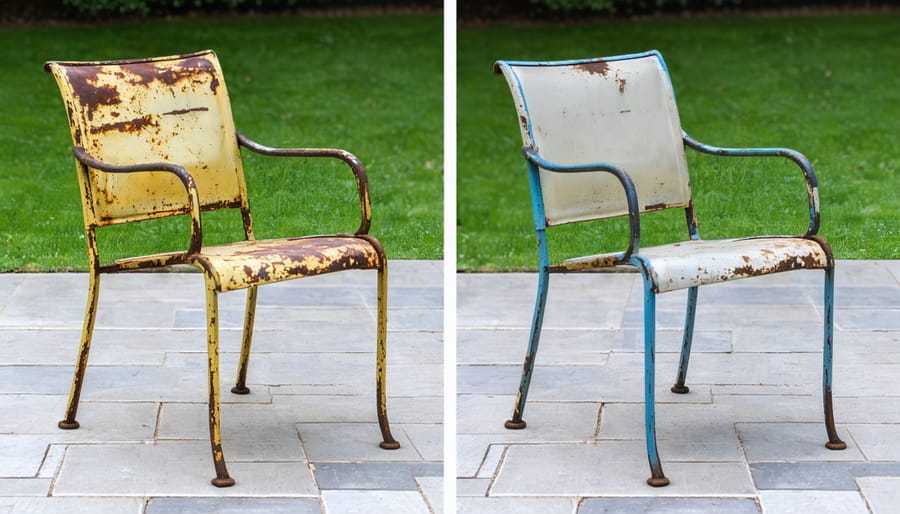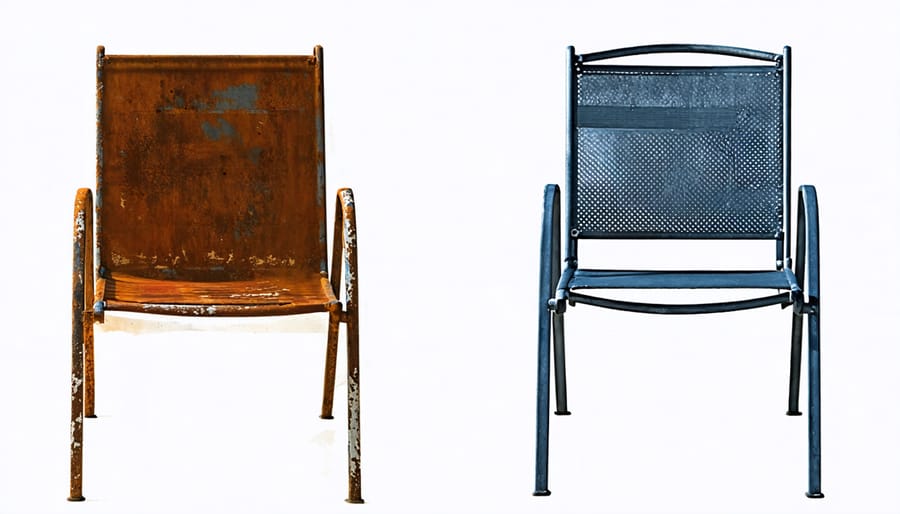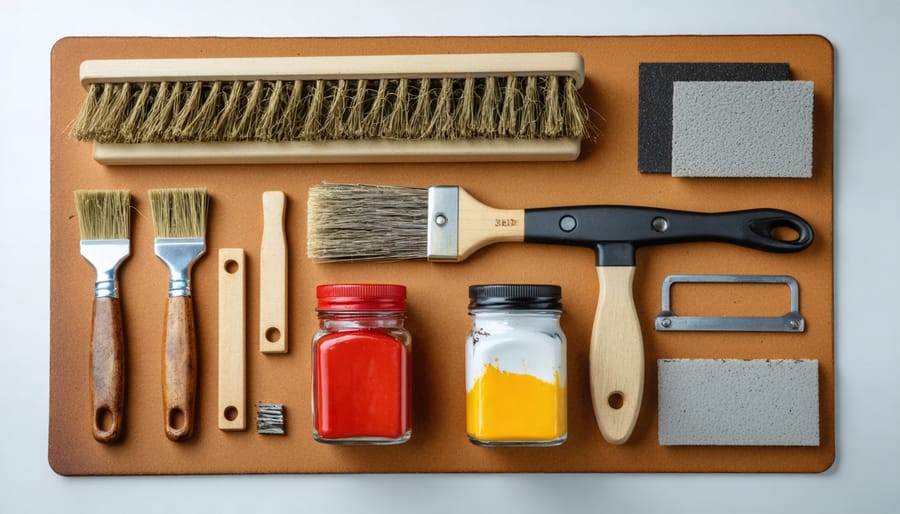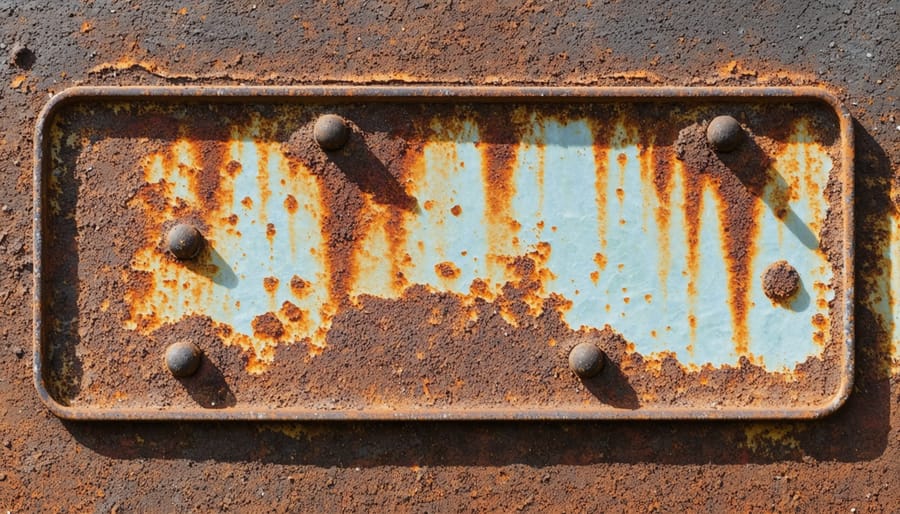
Restore your weathered metal outdoor furniture to its former glory with professional-grade techniques that save thousands in replacement costs. From surface rust to structural damage, understanding the right repair approach transforms deteriorating patio sets into lasting outdoor investments. Whether facing corroded chair legs, wobbly table frames, or peeling paint, proper metal furniture restoration combines thorough inspection, appropriate treatment methods, and preventive maintenance to extend furniture life by 10-15 years. This comprehensive guide breaks down essential repair techniques for common metal furniture problems, helping you determine which fixes you can handle yourself and when to seek professional expertise.
[Note: This introduction establishes authority while addressing key pain points, sets clear expectations for actionable solutions, and maintains an informative yet approachable tone. It combines practical value with emotional appeal (saving money, preserving investments) while staying focused on the core search intent.]
Metal outdoor furniture commonly experiences several types of damage due to weather exposure and regular use. Rust is perhaps the most prevalent issue, often developing at joints and connection points where moisture can accumulate. This oxidation not only affects the furniture’s appearance but can also compromise its structural integrity if left untreated.
Loose joints present another frequent problem, typically occurring when screws, bolts, or rivets deteriorate or work themselves loose over time. This can cause wobbling, instability, and potential safety hazards, particularly in chairs and tables that bear weight regularly.
Bent frames often result from impact damage, excessive weight, or improper storage. Common areas affected include chair backs, table legs, and armrests. While minor bends might be purely cosmetic, severe distortions can make furniture unusable and require professional attention.
Damaged welds are especially concerning as they affect the furniture’s core structure. These can occur due to age, stress on joining points, or manufacturing defects. Signs of failing welds include visible cracks, separation at connection points, and unusual movement in previously rigid sections.

Deciding whether to tackle metal furniture repair yourself or call a professional depends on several key factors. Simple repairs like tightening loose screws, touching up minor scratches, or replacing basic hardware are generally safe DIY projects requiring minimal tools and expertise.
Consider professional help when dealing with structural damage, deep rust penetration, or broken welds. These issues require specialized equipment and technical knowledge to ensure safe, lasting repairs. Professional intervention is also recommended for antique or high-value pieces where improper repairs could diminish their worth.
Assess your comfort level with the following situations:
– Repairs requiring welding or metal fabrication
– Extensive rust damage affecting structural integrity
– Complex mechanical parts like swivel mechanisms
– Powder coating or professional finishing
– Custom part replacement or fabrication
If you’re unsure about the extent of damage or lack proper tools, consulting a professional can save time and prevent potential safety hazards. Many repairs that appear simple on the surface may reveal more significant underlying issues once work begins. Remember, investing in professional repairs often proves more cost-effective than replacing expensive outdoor furniture or risking further damage through DIY attempts.

Before tackling any metal furniture repair project, gathering the right essential repair tools will ensure you’re well-prepared for success. Start with safety equipment including protective gloves, safety glasses, and a dust mask. Your basic toolkit should contain a wire brush for rust removal, medium and fine-grit sandpaper, and a putty knife for surface preparation. For repairs, you’ll need pliers, an adjustable wrench, and a socket set to handle various fastener sizes. Keep a measuring tape, level, and marking pencil handy for accurate alignments. A power drill with metal bits proves invaluable for replacing damaged parts, while a quality metal primer and paint will protect your repairs. Don’t forget cleaning supplies like mineral spirits and rags for proper surface preparation. Having these tools readily available will make your repair work more efficient and professional-looking.
For effective metal furniture restoration, we recommend using Rust-Oleum’s Rust Reformer as your primary rust treatment solution. This product chemically converts rust into a paintable surface, creating an excellent foundation for repair work. Follow this with Krylon’s Fusion All-In-One paint, specifically designed for outdoor metal surfaces and offering superior weather resistance.
For protective coating, we highly recommend Rust-Oleum’s Clear Enamel spray, which provides a durable finish that resists UV damage and moisture. Other essential materials include:
– 80-grit and 220-grit sandpaper for surface preparation
– Wire brushes (both manual and drill-attached)
– Mineral spirits for cleaning
– Primer specifically formulated for metals
– Painter’s tape and drop cloths
– Quality paintbrushes or foam rollers
– Respirator mask and safety goggles
– Nitrile gloves for protection
For severe rust cases, consider using Naval Jelly rust dissolver, which effectively removes stubborn oxidation. Store these materials in a cool, dry place to maintain their effectiveness for future touch-ups and repairs.
Rust is the nemesis of metal outdoor furniture, but with proper treatment, you can restore your rusted metal patio set to its former glory. Begin by removing loose rust using a wire brush or sandpaper, working in the direction of the metal’s grain. For stubborn rust patches, a drill-mounted wire brush attachment can provide extra power while saving time and effort.
Once the loose rust is removed, apply a quality rust converter product, which chemically transforms rust into a stable compound that prevents further oxidation. These products typically turn the rust black, creating a protective primer-like coating. Allow this to cure completely according to the manufacturer’s instructions.
For preventive treatment, apply a rust-inhibiting primer specifically designed for outdoor metal furniture. Follow this with two coats of exterior-grade metal paint or powder coating for maximum protection. Many of our customers have found success with zinc-rich primers, which provide exceptional corrosion resistance.
To prevent future rust formation, consider these protective measures:
– Keep furniture elevated from wet surfaces
– Use furniture covers during harsh weather
– Apply a clear sealant annually
– Touch up chips or scratches promptly
– Store furniture in a dry location during off-seasons
Regular maintenance and prompt attention to any signs of rust will significantly extend the life of your outdoor metal furniture and maintain its appearance for years to come.

Loose joints and connections in metal outdoor furniture can compromise both safety and stability. Begin by identifying all loose components, including bolts, screws, and welded joints. For bolt-connected pieces, remove any rust or debris from the fasteners and surrounding areas using a wire brush. If the existing hardware is damaged, replace it with stainless steel alternatives specifically designed for outdoor use.
To strengthen wobbly connections, first tighten all existing fasteners using the appropriate wrench or screwdriver. For stripped screw holes, insert a slightly larger screw or use a thread repair kit to restore functionality. In cases where the metal itself has worn around the connection point, reinforcement plates can be added to provide additional stability.
For loose welded joints, temporary fixes can include using epoxy metal bond or specialized metal adhesives. However, these solutions are typically short-term, and proper welding by a professional is recommended for lasting repairs. When dealing with tubular furniture frames, internal connection sleeves can be inserted to reinforce joints from within.
Always ensure moving parts, such as swivel mechanisms or folding components, are properly lubricated after repair. Apply a weather-resistant lubricant to prevent future seizing and maintain smooth operation. For preventive maintenance, regularly check and tighten connections, especially after extreme weather events or heavy use.
When metal outdoor furniture frames become bent or misshapen, proper straightening and reinforcement can restore both functionality and appearance. For minor bends in tubular frames, start by carefully assessing the damaged area and measuring the degree of distortion. Using a rubber mallet, gently tap the bent section while supporting the opposite side to gradually realign the metal.
For more severe bends, you may need to apply controlled heat using a heat gun, moving it continuously to prevent overheating. Once the metal becomes slightly pliable, use steady pressure to reshape it. Always allow the metal to cool naturally before testing the repair.
Reinforcement is crucial after straightening to prevent future issues. Add support brackets at stress points, particularly at joints and corners. For hollow tubes, internal sleeve reinforcements can provide excellent stability. When working with aluminum frames, use aluminum-specific reinforcement materials to prevent galvanic corrosion.
Professional hydraulic straightening may be necessary for complex bends or high-end furniture pieces. This method ensures precise alignment without risking structural integrity. After straightening, consider adding cross-bracing to distribute weight more evenly and prevent future sagging.
Regular inspection of repaired areas helps identify any need for additional reinforcement. Pay special attention to weight-bearing points and areas exposed to frequent movement. For optimal results, apply rust-inhibiting primer and paint to protect the repaired sections from environmental damage.
The final step in restoring metal outdoor furniture is applying proper finishing and protective coatings to prevent future damage. Start by thoroughly cleaning and drying the repaired surface. For painted furniture, use a high-quality exterior metal primer followed by weather-resistant paint specifically formulated for outdoor metal surfaces.
Apply thin, even coats using a foam roller or high-quality brush, allowing each layer to dry completely before adding the next. Two to three coats typically provide optimal coverage. For textured finishes, consider using spray paint designed for outdoor metal, maintaining a consistent distance and overlapping pattern during application.
For unpainted metal furniture, consider long-lasting protective treatments such as clear polyurethane or specialized metal sealants. These create an invisible barrier against moisture and UV damage while preserving the natural metal appearance.
Allow the final coat to cure for at least 48 hours before exposing the furniture to outdoor conditions. In high-moisture environments, consider adding an additional layer of clear waterproof sealant for enhanced protection. Remember to touch up any chips or scratches promptly to maintain the protective barrier and prevent rust from developing.
Regular inspection and maintenance of the protective finish will significantly extend the life of your outdoor metal furniture, saving you time and money in the long run.
Regular maintenance is the key to extending the life of your repaired metal outdoor furniture. To weather-proof your outdoor furniture and prevent future damage, establish a consistent care routine throughout the year.
Clean your furniture at least once a month using mild soap and water, paying special attention to joints and crevices where moisture can accumulate. After cleaning, ensure the furniture is completely dry to prevent rust formation. Apply a protective coat of automotive wax every three months to create a barrier against moisture and UV damage.
Store furniture in a covered area during severe weather conditions or use high-quality furniture covers when protection is needed. If covers are used, ensure proper ventilation to prevent moisture buildup underneath. During the off-season, store furniture in a dry, climate-controlled space if possible.
Inspect your furniture regularly for signs of wear, such as paint chips or developing rust spots. Address these issues immediately with touch-up paint or rust treatment to prevent further deterioration. Tighten any loose screws or bolts monthly, as movement can wear down protective coatings and lead to structural issues.
Keep furniture elevated off wet ground using furniture feet or pads, and adjust leg caps regularly to prevent metal-to-ground contact. For areas near pools or ocean environments, rinse furniture weekly to remove chlorine or salt residue, which can accelerate corrosion.
These preventive measures will help maintain your furniture’s appearance and structural integrity, significantly reducing the need for major repairs in the future.
Maintaining and repairing metal outdoor furniture is essential for preserving both its functionality and aesthetic appeal. Throughout this guide, we’ve explored various aspects of metal furniture repair, from identifying common issues like rust and structural damage to implementing effective repair solutions. Regular maintenance, including cleaning, rust prevention, and prompt attention to minor damages, can significantly extend the life of your outdoor furniture while saving you money in the long run.
Remember that successful repairs begin with proper assessment and preparation. Having the right tools and materials on hand, understanding the type of metal you’re working with, and following appropriate safety protocols are crucial elements of any repair project. While many repairs can be handled as DIY tasks, don’t hesitate to seek professional help for complex structural issues or valuable vintage pieces.
By implementing a regular maintenance schedule and addressing problems early, you can keep your metal outdoor furniture looking beautiful and functional for years to come. Whether you’re dealing with a beloved family heirloom or commercial patio furniture, the investment in proper care and repair will always pay off. Keep these repair techniques and maintenance tips in mind, and you’ll be well-equipped to handle most common metal furniture issues while knowing when to call in the experts for more challenging repairs.